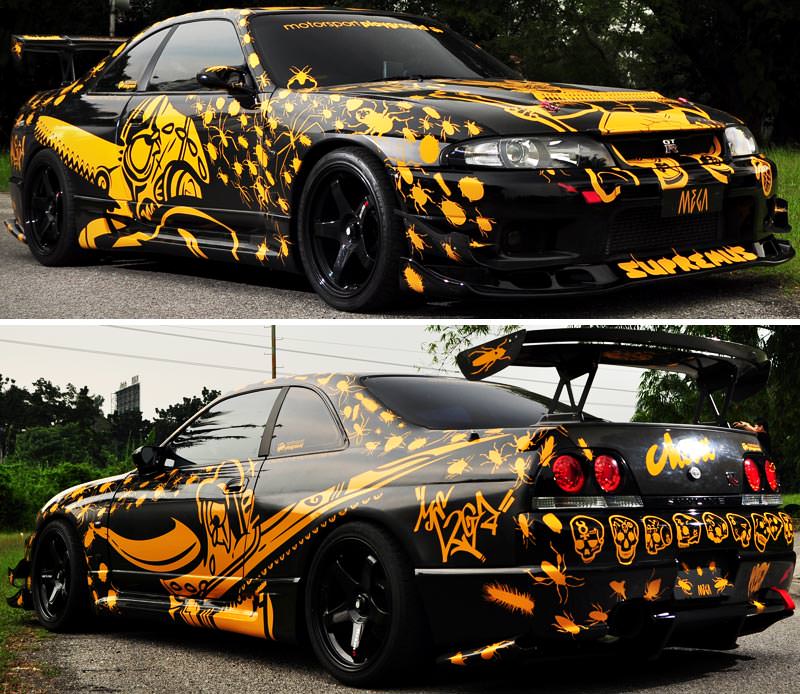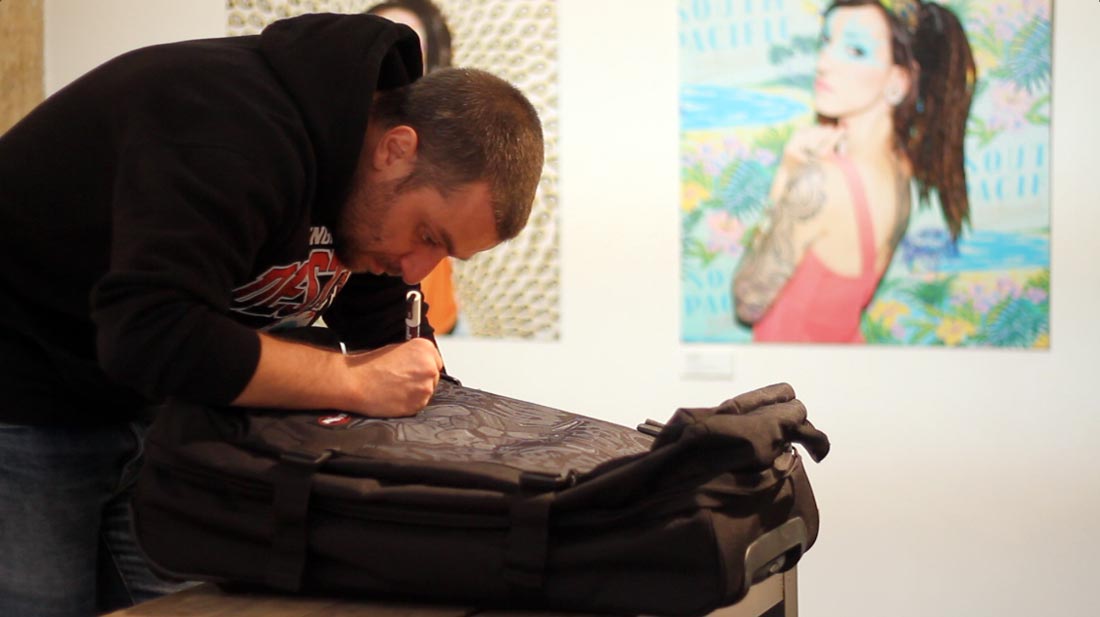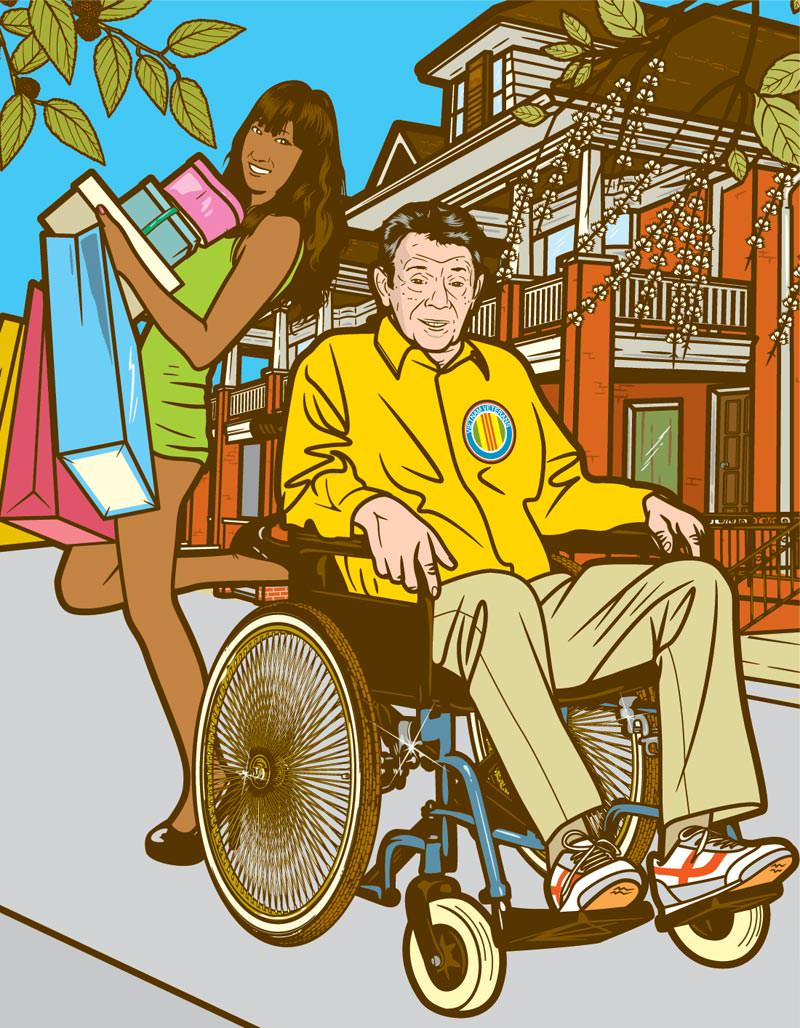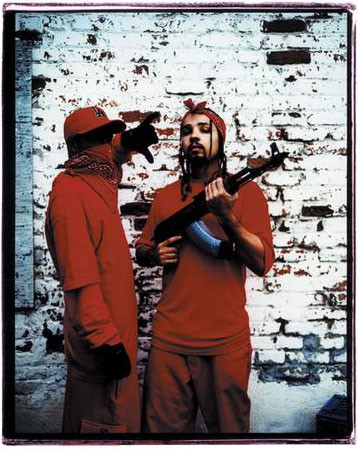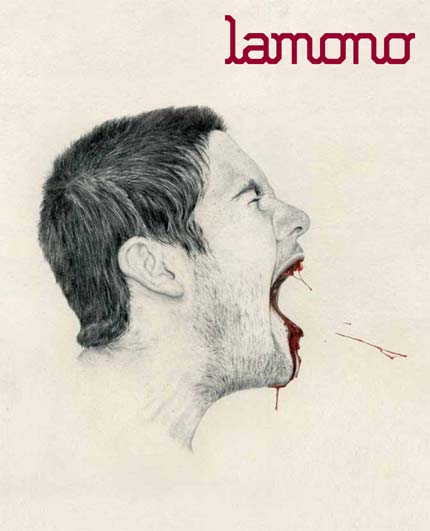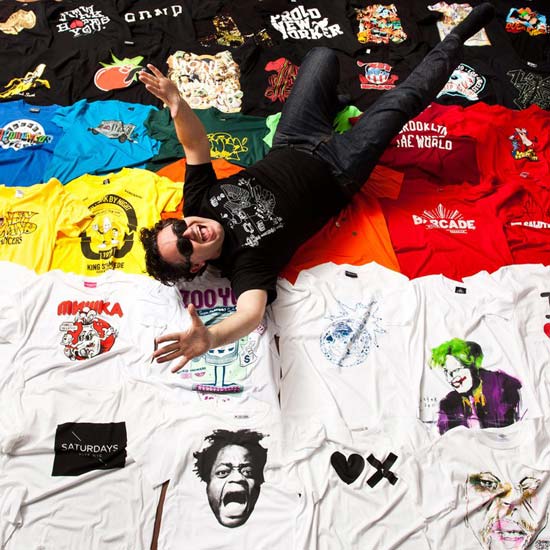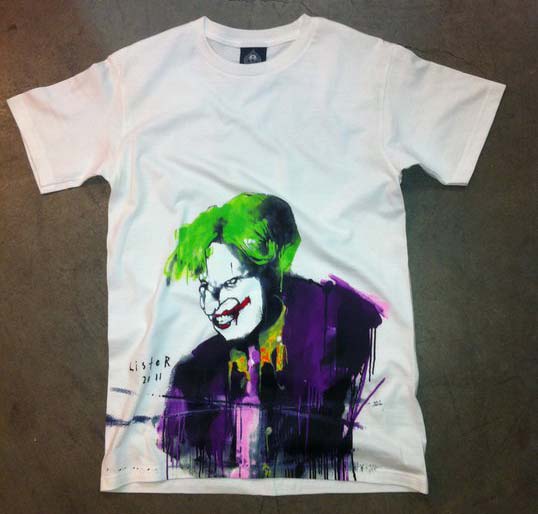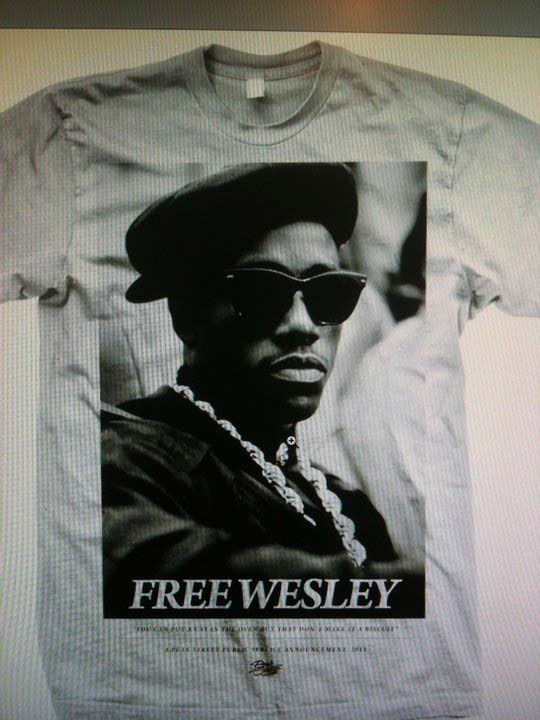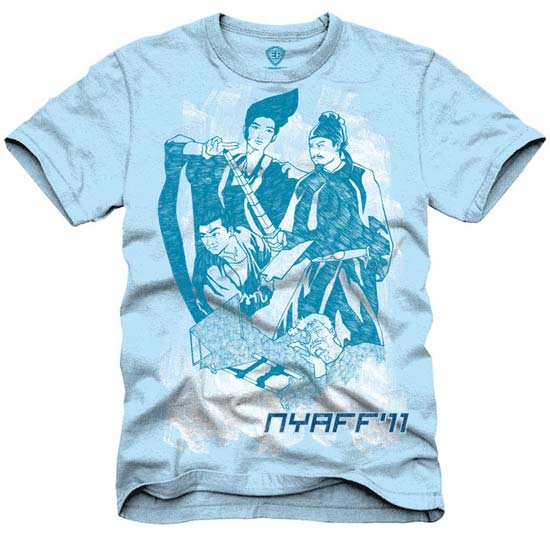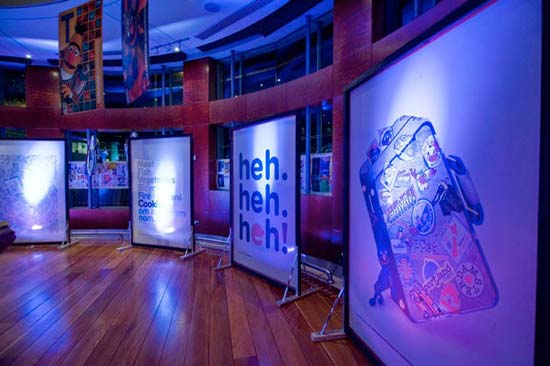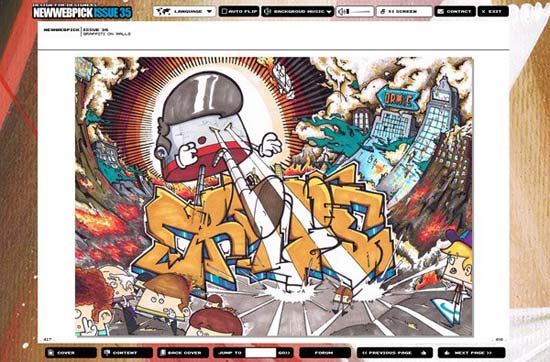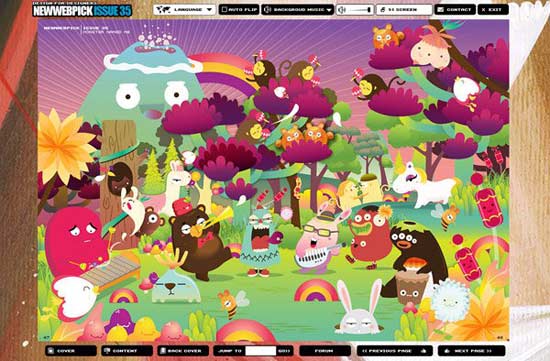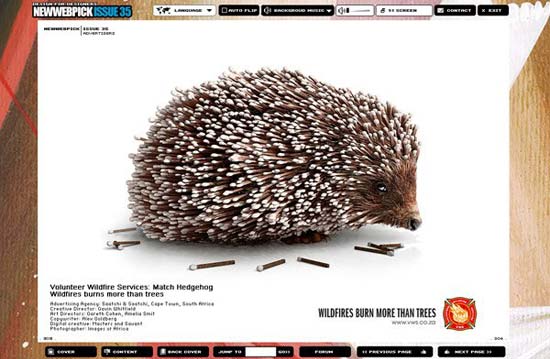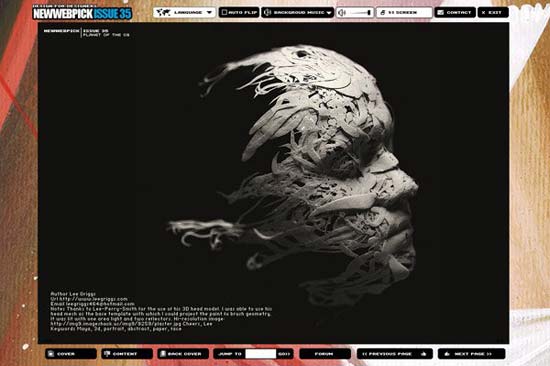Concept magazine wrote a huge article in Indonesian about me
Warrior bertopeng si “bule ndeso”
“Masked warrior from the village’s gringo.” Huge article in the biggest graphic design magazine magazine in Indonesia. I love Indonesia, I love Concept magazine, and this is one of the best article I ever had. So if you can’t understand I feel sorry for you, because you should learn this beautiful language…
Sosok lelaki bertopeng menggunakan sweater dan membawa tompak nampak mendominasi karya-karya Mega. Kadang kesatria ini nampak membawa pisau atau terlihat mimiliki tanduk yang panjang, Sepintas lalu, karakter warrior ini mirip seperti Aborigin, sementara di karya lain terlihat seperti Indian Maya. Namun Mega, sang pencipta karakter ini, mengaku kesatria tersebut bukanlah gambaran dari suku mana pun. “Itu berasal dari dalam diri saya sendiri. Tapi Anda bebas mengatakan bahwa warrior itu berasal dari daerah tertentu,” ujar artis asal Perancis ini.
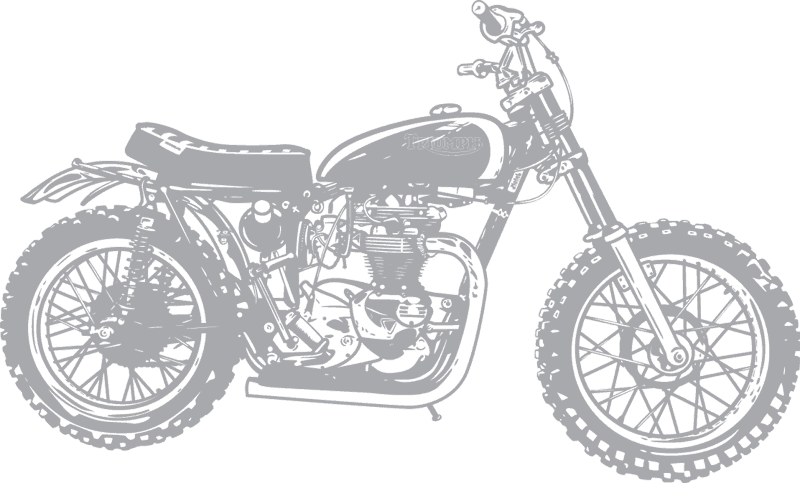
Pertanyaan seputar inspirasi yang melatarbelakangi Mega menciptakan karakter tersebut memang banyak beredar. Tapi satu hal yang pasti, sang warrior bubahanya selalu muncul dengan seraut topeng yang unik. “Karena saya tinggal di Bali, banyak kawan-kawan saya yang mengira bahwa karakter tersebut berasal dari Bali,” lanjut Mega. Selain kesatria bertopeng, Mega juga menggambar perempuan, serangga, ganesha, garuda dan beberapa karakter lain yang dibuat dalam gaya realis. Senima vektor ini memang sangat tertarik dengan berbagai macam debuduyaan dan bahasa.
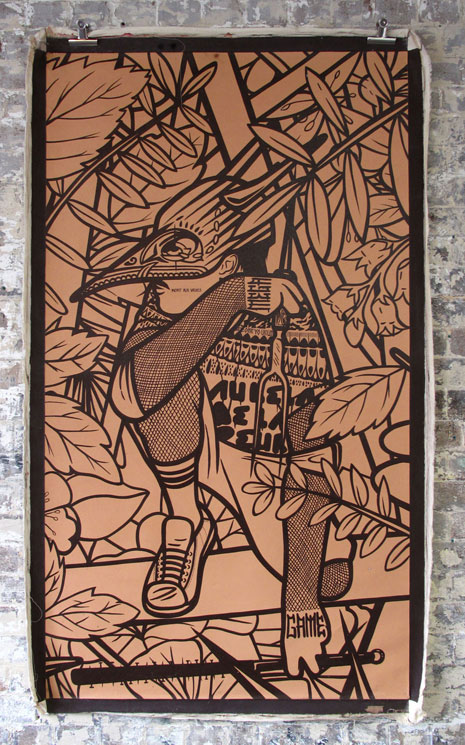
Concrete jungle part. 1
Dalam berkarya, seniman generasi baru ini kerap berpindah tempat. Menurut pengakuannya, ia telah menghabiskan sebagian hidupnya untuk berkeliling dunia demi mempelajari kebudayaan-kebudayaan yang dianggapnya baru. “Saya orang yang senang belajar bahasa. Selama ini saya saya berkeliling dunia karena saya senang mempelajari bahasa-bahasa baru,” paparnya di sela acara diskusi dan pembukaan pameran seni vektor bertajuk “Madu, Racun & Negriku” di Serambi Salihara, Jakarta Selatan, pada 28 Mei lalu. Mega pernah menetap di Argentina dan Brazil untuk mencicipi kebudayaan masayarkat Amerika Selatan tersebut. Dan sekarang walaupun -untuk jangka waktu yang belum ditentukan- tinggal di Bali, Mega rajin menggelar pameran karya-karyanya di berbagai negara.
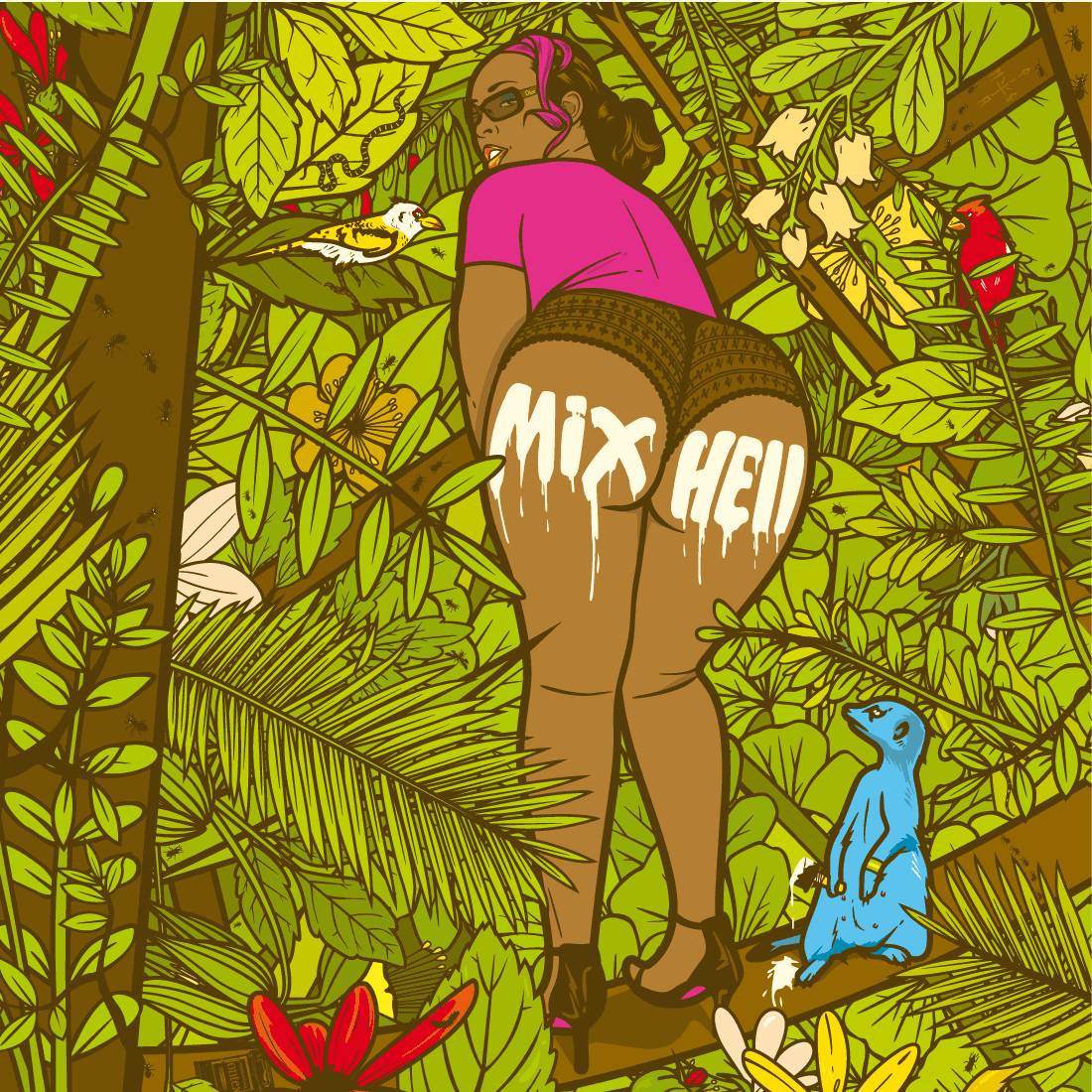
Cover for DJ duo Mixhell
JATUH CINTA PADA INDONESIA
Bari Mega, berkeliling dunia dan mempelajari kebudayaan berbagai daerah memberinya sebuah pemikiran baru dan inspirasi. “Saya tertarik dengan budaya, kuliner, dan agama. Saya tertarik dengan mereka punya enrironment dan pendidikan. Dengan begitu saya berharap mendapatkan sebuah pemikiran baru di luar pemikiran umum orang Perancis yang selama ini saya ketahui,” paparnya. Setelah puas bersinggugan dengan negara-negara berbahasa Latin, baik di Eropa maupun Amerika, antusiasmenya kini terjuju pada Asia. “Saya tertarik untuk mempelajari bahasa yang tidak ada kaitannya dengan bahasa Latin. Atau saya ingin mempelajari rumpun bahasa Sanskrit, saya pikir pasti bagus sekali,” jelas Mega.
Ketertarikan itulah yang mendorong pengagum Guy Debord (penulis, pembuat film Perancis dan pendiri grup Lettrist International) dan Louis Ferdinand Celine (penulis asal Perancis) ini memutukan untuk hijrah ke Indonesia. Walau mengakui keindahan wilayah Indonesia lainnya, Mega memilih Bali sabagai tempat tinggalnya di Indonesia. Bagi pria yang senang tampil dengan celana selulut dan sepatu sport ini, semua wilayah Indonesia badus dan menarik untuk dipelajari. “Menurut saya tidak akan cukup waktu seumur hidup untuk bisa mempelajari semua wilayah Indonesia dengan kebudayaannya warisannya, serta bahasanya.”
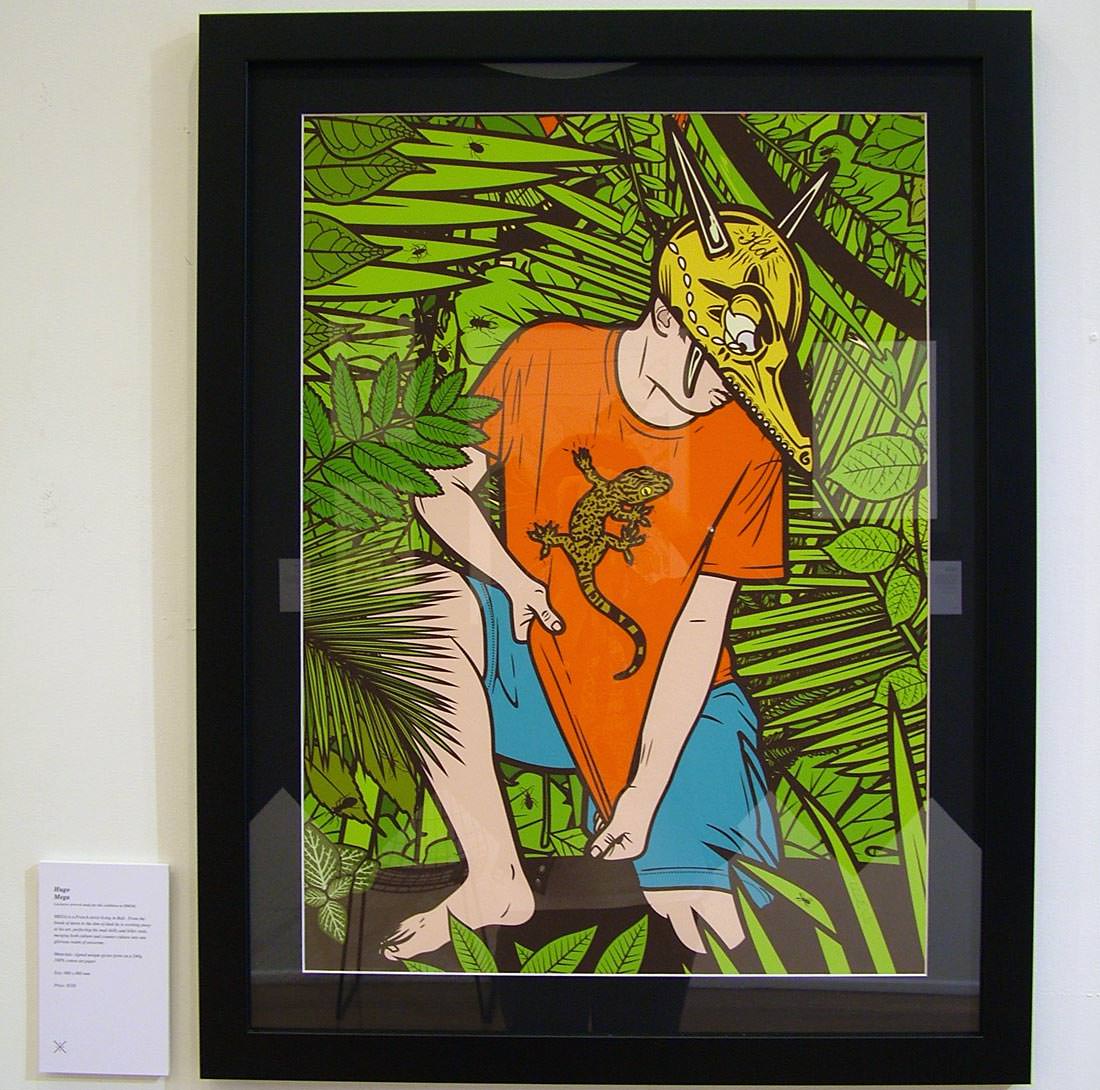
My masked character exhibited in the art space
Mega baru begitu mengagumi Indonesia. Ia mengaku heran melihat banyak sekali suku yang terdapat di Indonesia dan terbesar di banyak pulau, namun bisa hidup berdampingan dalan satu negara. “Bayangkan saja, ada banyak sekali suku yang ada di Indonesia yang sebenarnya berbeda-beda, bahasanya, budayanya, warisannya, bahkan juga genetiknya. Tapi semuanya masih bisa percaya pada satu negara. Bisa bersatu dan bersama dalam satu negara Indonesia.” Inilah salah satu alasan yang membuat Mega mimilih tinggal di Indonesia.
Menurut Mega, ketertariknya pada upacara dan akat kebiasaan masyarakat Bali banyak memberikan inspirasi baginya. “Saya tertarik dengan upacara agama Hindu yang buat saya sangat bagus, maka saya membuat karya tentang Barong dan Rangda,” imbuh Mega. Selain itu, freelance illustrator bagi beberapa perusahaan ini juga menggambar Dewa dalam kepercayaan Hindu Bali. “Karena mungkin saja mereka mau membantu saya supaya saya bisa mendapatkan inspirasi dalam hidup saya,” selorohnya.
Ketika ditanya tentang berapa banyak karyanya yang terinspirasi oleh Bali, Mega mengaku tak bisa disebutkan dalam angka. Menurut Mega, Bali telah merasuk ke dalam kehidupannya. sehingga dalam setipa karya yang ia hasilkan selalu mengandung unsur Bali di dalamnya.
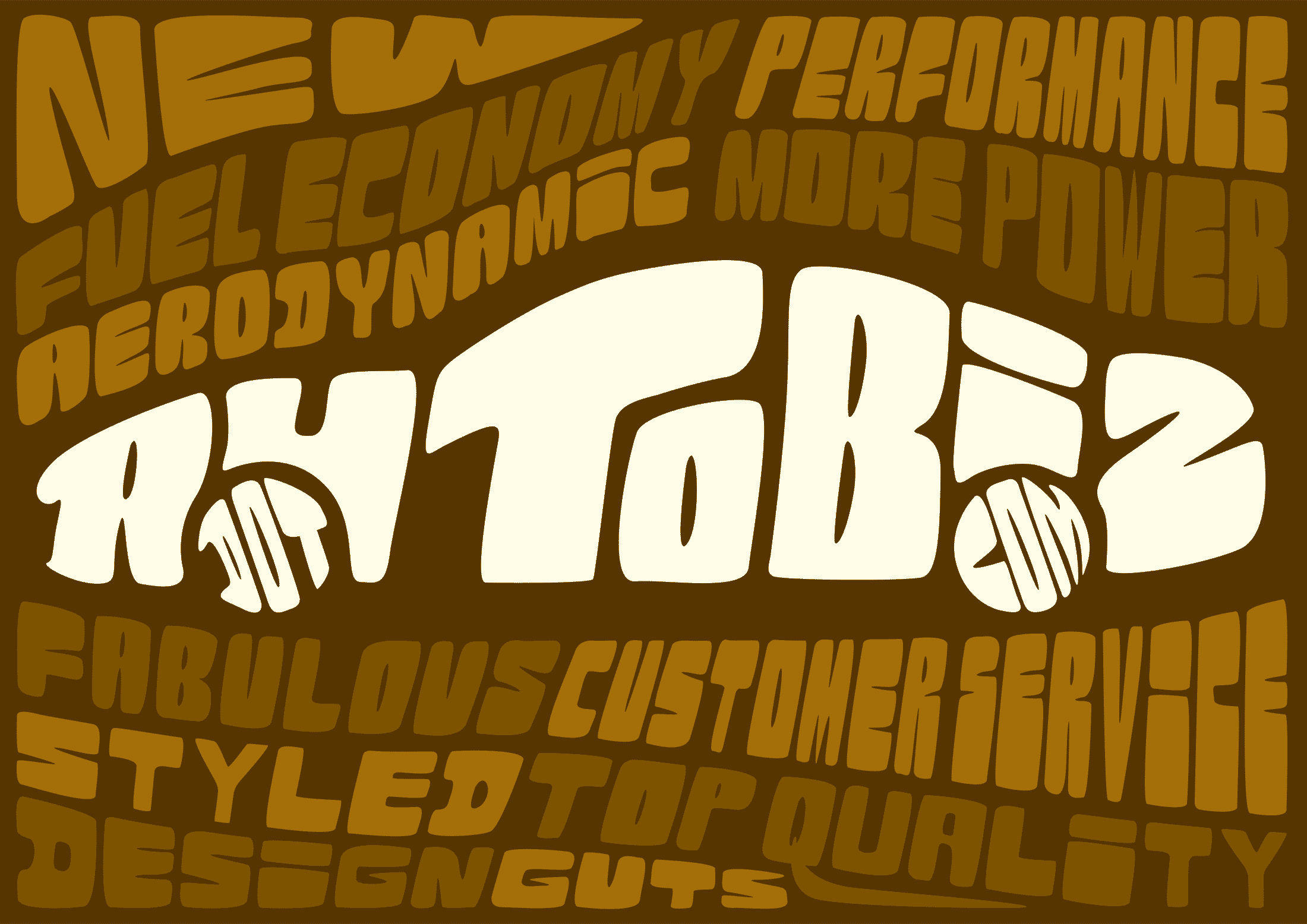
“SAYA BENCI BULE YANG SOMBONG”
Di Bali, Mega tinggal di sebuah desa -desa dalam arti sesungguhnya, bukan desa wisata- di kawasan Nusa Dua bagian selatan. Ada kisah menarik di balik keputusannya untuk menetap di desa. Ketika tiba di Bali, Mega sempat merasakan tinggal di kawasan wisata yang didominasi oleh wisatawan mancanegara, tapi ia merasa tak nyaman dengan tingkah lalu para turis tersebut. Menurut Mega, orang-orang asing yang ada di Bali terlalu sombong dan seolah selalu inggin tampil layaknya selebritas.
“Buat saga itu aneh, mereka ingin menjadi terkenal di dunia yang sangat kecil. Bali ini kecil sekali,” ucapnya serius. Alhasil. Mega memilih untuk menjauh dari komunitas orang asing dan tinggal di Desa Sawangan, sebelah selatan Nusa Dua, dan ia sangat menikmati tempat tinggalnya yang baru. “Saya belajar bahasa Indonesia. Tidak perlu ikut kursus, cukup mengobrol dengan warga desa. Saya juga ikut ritual agama Hindu yang biasanya mereka lalukan setiap pagi di pura kecil yang ada di depan rumah mereka. Walaupun tidak beragama, tapi saya juga membangun pura kecil di tempat tinggal saya,” ujar Mega sambil tersenyum.
Di Desa Sawangan, Mega menaku merasa terbebas dari ketidaknyamananya terhadap turis-turis asing, karena memang nyaris tak ada turis asing yang hilir-mudik di desa tersebut. “Kalaupun ada ya mereka tinggal di hotel,” ujarnya. Mega pun tak takut jika dianggap tidak modern atau kere, bahkan ia tahu ada juga dari turis-turis asing yang mencemoohnya. “Saya tidak mau dekat-dekat dengan komunitas turis bule. Saya tahu mereka juga mungkin melecekhan saya seperti mengatakan, ‘Waah itu Mega bule yang ndeso.’ Tapi saya tidak masalah karena justru itu bagus buat saya. Saya benci bule yang sombong,” ujarnya.
KERJA, KERJA, DAN BERKERJA
Mega mengaku mencitai dunia grafis sejak kecil.Slah satu hobinya adalah membuat sampul kaset kompilasi yang ia rekam sendiri. Untuk membuatnya, Mega mengorbankan majalah-majalah untuk kemudian dugunting dan ditempel hingga menjadi sampul kaset yang unik dan berbeda. “Beberapa hari saya asyik memilih-milih gambar, menotong dan mencoba beberapa komposisi yang baru,” ungkapnya. Setelah beranjak ABG, hobi grafisnya disalurkan melalui grffiti pada tembok dan dinding kereta api.
Satu hal yang unik, Mega tidak mau diatur ketika membuat graffiti karena menurutnya graffiti adalah kegiatan yang ilegal yang mengenal aturan. “Saya tidak suka bila ada aturan-aturan tentang gaya atau teknik. Kamu harus ini, kamu haus itu, waah saya tidak suka yang seperti itu. Karena buat saya ini hanya cat di tembok dan ini aktivitas yang ilegal. Aktivitas yang seperti ini harusnya ya memang tidak ada aturan khusus,” jelas Mega.
Selain giat berpameran, Mega juga sering terligat sebagai freelance illustrator dan art director di banyak media massa grafis di berbagai negara. Ia banyak terinspirasi oleh buku-buku grafis terbitan Jerman atau Swiss yang membuatnya berpikir membuat karya untuk majalah dan publishing lainnya. “Saya lihat buku-buku tersebut bagus sekali dan saya pikir saya juga harus mencobanya. Dari situ kemudian saya mulai membuat-buat majalah dan publishing.”
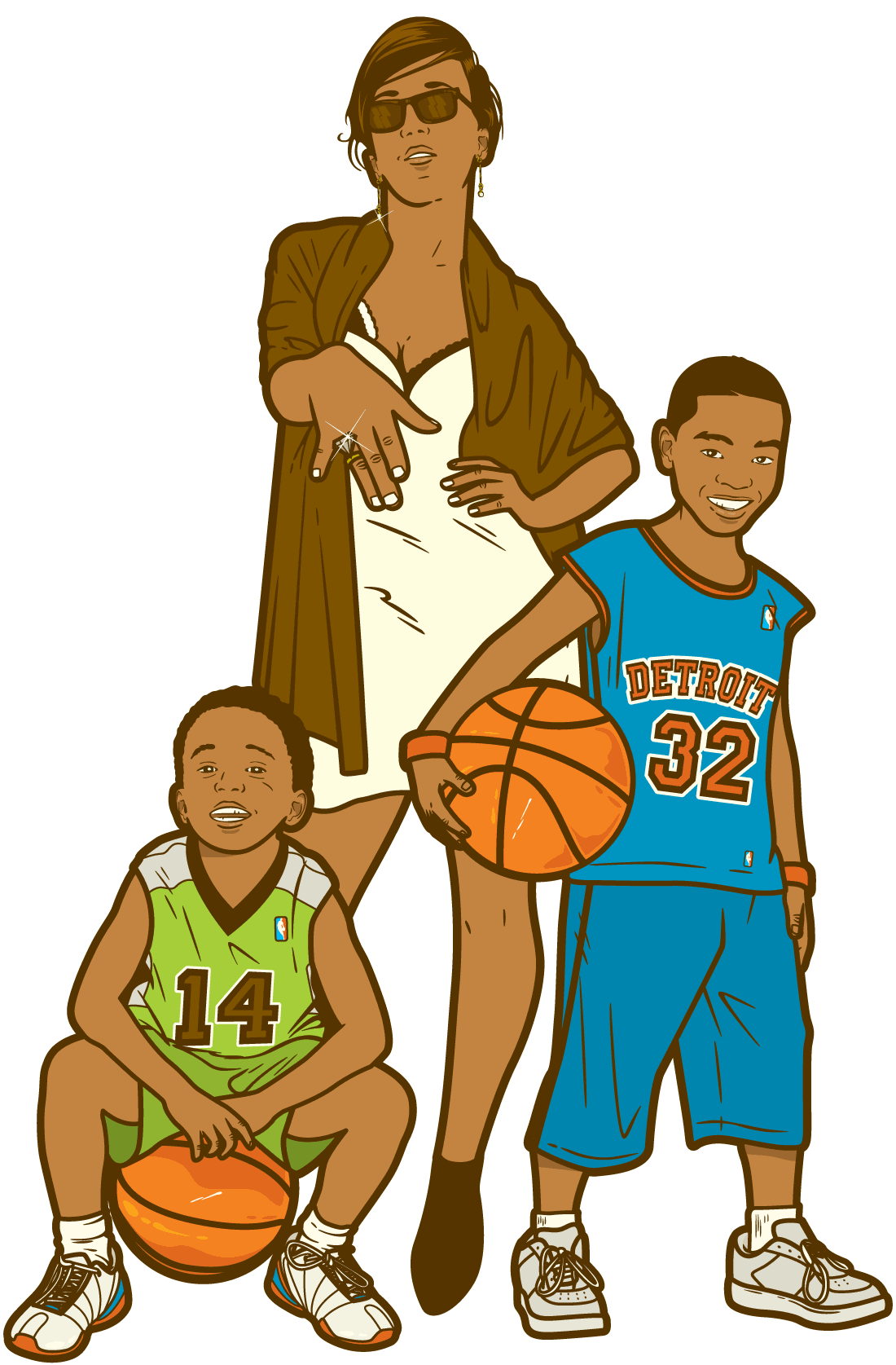
Do you remember the NBA players wives I drew for Complex? Here is another artwork with the nice NBA wife and her 2 kids.
Kendati sudah banyak menghasilkan karya, Mega mengaku masih belum tahu apa yang menjadi ciri khas dari setiap karyanya, karena menurutnya hal terpenting adalah menghasilkan sebuah karya yang terbaik. Meski begitu, Mega sebagai seorang seniman tetap memiliki ciri khas dalam karyanya, yaitu pemilihan warna. “Jika untuk media seperti t-shirt atau kain, saya suka memainkan satu warna saja. Tapi jika untuk majalah atau media yang sejenis biasanya saya akan memainnkan banyak warna,” terang Mega.
Ia mengatakan, karakter masking warrior juga laya dianggap sebagai salah satu karya yang identik dengan dirinya. “Jika Anda melihat ada artwork tentang warrior di tengah hutan yang menggunakan topeng dan membawa tombak atau pisau, itu pasti karya saya. Warrior itu pasti karya Mega,” terang Mega.
Mega tak memiliki resep khusus untuk membuat sebuah karya yang bagus. Menurutnya, yang harus dilakukan adalah berkerja dan berlatih. “Kerja. Untuk bisa menghasilkan karya yang bagus harus berkerja, berkerja, dan berkerja. Dan jangan ingin menjadi artis karena ingin kaya atau ingin menjadi selebritas. Lebih baik menjadi kaya dari karya yang banyak daripada kaya dengan uang yang banyak,” paparnya dengan mimik serius. Kekayaan memang sepertinya bukan hal yang penting bagi Mega, karena buat dia, ketika meninggal, manusia tidakakan membawa uang atau harta. “Jangan terobsesi dangan kekayaan, tapi harus terobsesi dengan karya. Jika berkarya melalui hati dan jiwa yang benar maka akan menjadi sebuah karya yang bagus. Yang penting berkerja, berkerja dan berlatih terus,” lanjut Mega.
Sebuah pemirikan yang bagus walaupun sangat sederhana. Rasanya aneh mendengar hal seperti ini keluar dari mulut orang bule seperti Mega. Ya, Mega memang bukan sembarang bule, karena ia bule yang “ndeso” dan kreatif.
